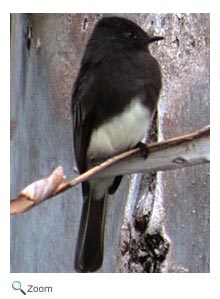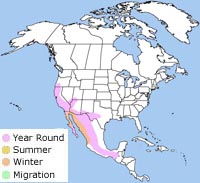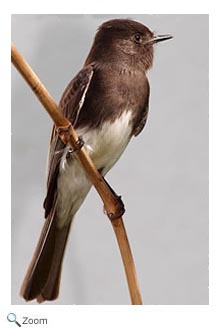Black Phoebe - Sayornis nigricans |
|||||||||||
Description
Range HabitatThe black phoebe is found in open areas near lakes, streams, and ponds. It is also found near cliffs, in agricultural areas, and in city parks. | Diet
Life CycleThe male black female locates a nest site and hovers over it. The female makes the final decision and builds an open cup nest of grass, mud, hair, and plant fibers. The nest is built on cliffs, under bridges, and in the eaves of buildings. The female lays 3-6 eggs and incubates them for 15-17 days. The chicks fledge in 14-21 days. The female may have 2-3 broods a year. BehaviorBlack phoebes are very territorial and often remain in the same place year-round. |
||||||||||
Audio Credit: xeno-canto.org Andrew Spencer |
|||||||||||


 The black phoebe is found in the western United States from southern Oregon to California and west from Arizona to Texas. It is also found in Mexico and in the Andes region of South America from Colombia to Argentina.
The black phoebe is found in the western United States from southern Oregon to California and west from Arizona to Texas. It is also found in Mexico and in the Andes region of South America from Colombia to Argentina. 